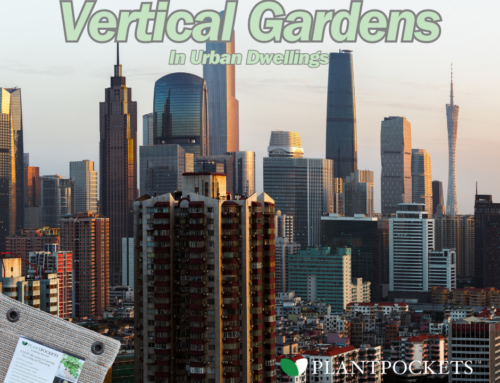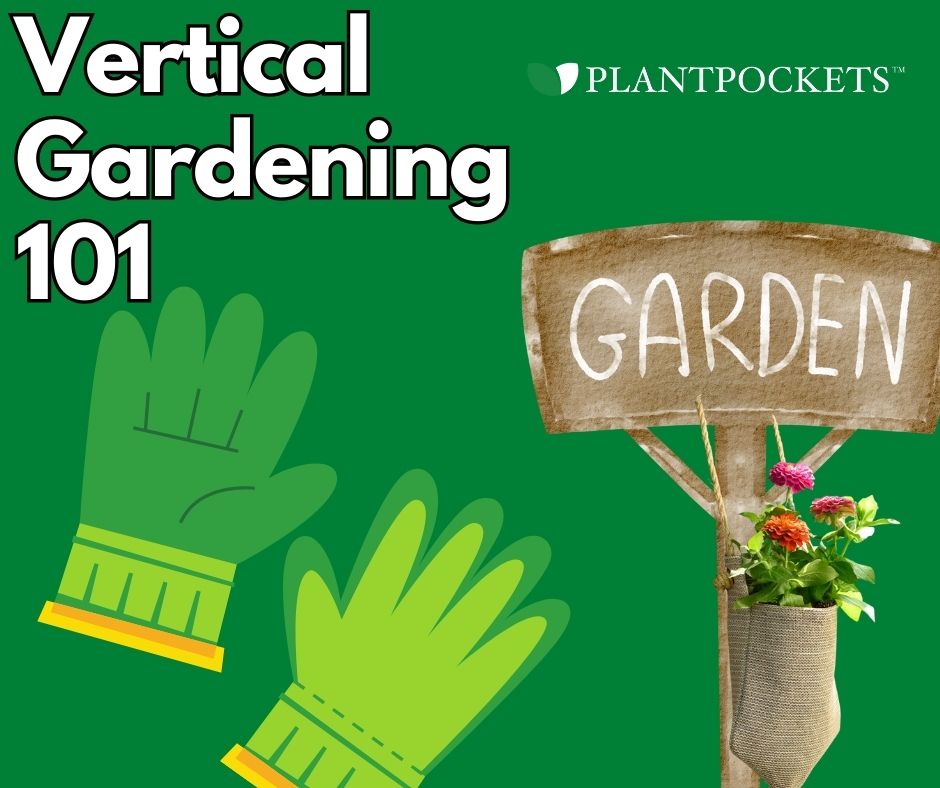Vertical Gardening 101 – A Beginners Guide To Get You Started
Vertical gardening can be an exciting and rewarding endeavor and activity for yourself as well as friends and family. But as a beginner, you will want to know the basics and understand what makes for a thieving vertical garden. Here are a few things to know and consider:
Understanding Vertical Gardening:
- Benefits of Vertical Gardening:
- Space-saving solution
- Enhanced aesthetics
- Improved air quality
- Accessibility for maintenance
- Types of Vertical Gardens:
- Container-based: Using pots, pockets such as PLANTPOCKETS™, or containers attached to a vertical structure.
- Living walls: Incorporating plants directly into a vertical surface.
Getting Started:
- Location and Light:
- Choose a spot receiving ample sunlight for most plants (at least 6 hours/day).
- Assess the structure’s stability to support the weight of the garden.
- Selecting Plants:
- Opt for plants that suit your climate and light conditions.
- Consider using a mix of trailing, creeping, and compact plants for variety.
- Choosing the Right Structure:
- Vertical gardening structures can vary from trellises, hanging pots, or modular systems.
- DIY options can include repurposed pallets, shoe organizers, or PVC pipes.
- Soil and Watering:
- Use well-draining soil mixtures to prevent waterlogging.
- Implement a watering schedule based on plant needs, as vertical gardens may dry out faster.
Maintenance Tips:
- Regular Inspections:
- Check for pests, diseases, or signs of nutrient deficiencies.
- Prune and trim plants as needed to encourage healthy growth.
- Watering Techniques:
- Utilize drip irrigation systems for efficient watering.
- Hand watering from the top might be necessary, especially for plants in hanging pots.
- Fertilization:
- Use slow-release fertilizers or organic compost to maintain soil fertility.
Troubleshooting:
- Common Issues:
- Overwatering or underwatering
- Insufficient light
- Pests or diseases
- Addressing Problems:
- Monitor soil moisture regularly to adjust watering frequency.
- Prune affected areas or use organic pest control methods if necessary.
Starting a vertical garden can be a learning experience, so don’t hesitate to experiment and adapt as you go. Patience and observation will be your best allies as you embark on this gardening journey.





